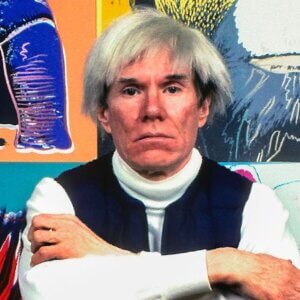
Andy Warhol, a name synonymous with the Pop Art movement, redefined what art could be by merging the realms of high art and popular culture. Born Andrew Warhola in 1928 in Pittsburgh, Pennsylvania, Warhol’s career as an artist, filmmaker, and cultural icon revolutionized the way art interacts with consumerism and celebrity culture. His bold, innovative approach not only made him a household name but also challenged the boundaries of the art world.
Early Life and Career
Warhol graduated from the Carnegie Institute of Technology in 1949, where he studied pictorial design. Upon moving to New York City, he found success as a commercial illustrator, working for renowned magazines like Vogue and Harper’s Bazaar. His early work in commercial art provided him the skills and visibility that would later be pivotal in his fine art career.
Breakthrough into Pop Art
In the early 1960s, Warhol began to explore the relationships between artistic expression, celebrity culture, and advertising. This led to his famous works involving mass-produced images from American popular culture such as Campbell’s soup cans and Coca-Cola bottles. Warhol’s 1962 exhibition at the Ferus Gallery in Los Angeles, which included his iconic 32 Campbell’s Soup Cans, catapulted him into the spotlight and cemented his position at the forefront of the Pop Art movement.
Artistic Techniques and Innovations
Warhol was known for his innovative use of silkscreen printing, a technique that enabled him to produce his artworks in mass quantities, a process he likened to an assembly line, often referring to his studio as “The Factory.” This method allowed him to blur the lines between traditional distinctions of art and manufactured goods, a theme that remained prevalent throughout his career.
The Factory
“The Factory,” Warhol’s studio, became a famous gathering place for intellectuals, drag queens, playwrights, Bohemian street people, Hollywood celebrities, and wealthy patrons. It was not only a physical studio but a hotspot for collaboration across the arts, influencing the music, film, and art scene of the time. Warhol also managed and produced the experimental rock band The Velvet Underground at The Factory, showing his multidisciplinary influence.
Film and Multimedia
Warhol’s contributions were not limited to the visual arts; he was an accomplished filmmaker, creating more than 60 films during his career. His most notable works include Sleep (1963) and Empire (1964), both of which played with the concept of time and the commercial conventions of filmmaking. He was also ahead of his time in predicting the future of television and produced content that contributed to the development of what we consider reality TV today.
Legacy and Influence
Andy Warhol passed away in 1987, but his impact is enduring. He fundamentally changed the nature of celebrity culture and the art world by illustrating how closely connected art is to the consumer goods and media we consume. Warhol’s work is continuously celebrated and remains influential, visible in modern art exhibitions, collaborations in fashion, and his profound impact on contemporary art theory and practice.
Conclusion
Andy Warhol’s exploration of the intersections between art, technology, and commerce anticipated much of contemporary culture’s ongoing preoccupations. He challenged the traditional norms of what art could be and expanded the scope of how art could be understood and accessed. Warhol’s legacy is a testament to the transformative power of art to reflect and shape everyday life, making him one of the most significant artists of the 20th century.






















